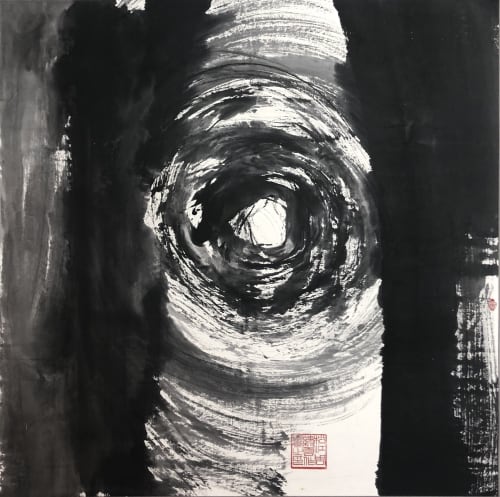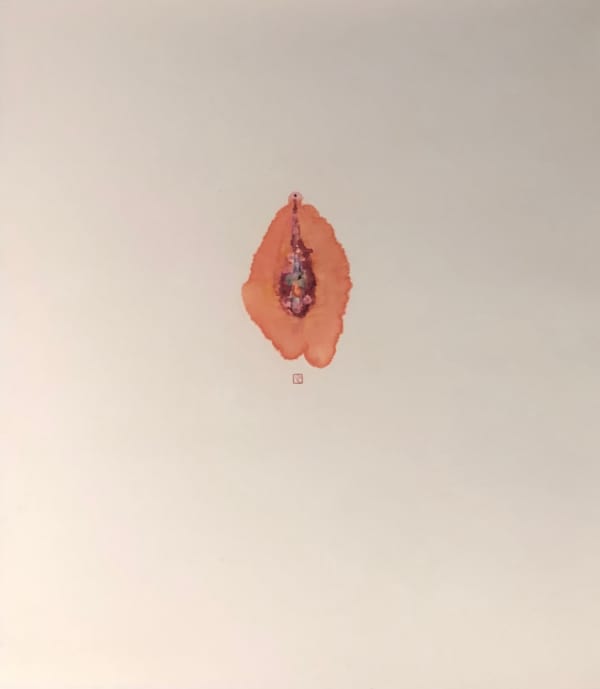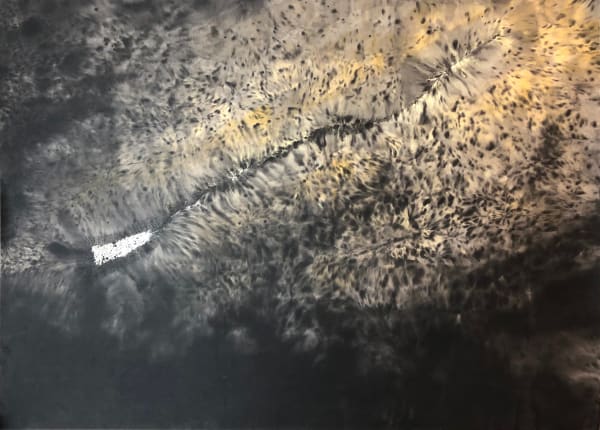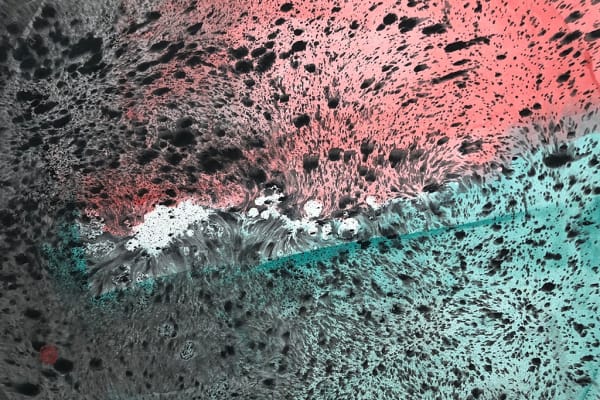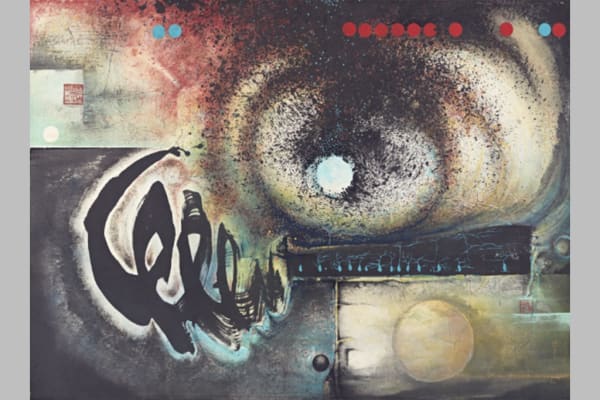Irene Chou was born in Shanghai, where she studied economics at St. John’s University. Upon graduating in 1945, Chou worked as a journalist for Peace Daily Shanghai. Thereafter she left for Taipei and in 1949 for Hong Kong. In 1954, she began to learn how to paint formally and became a student of Zhao Shao’ang, a master of the traditional Lingnan school of painting. In her traditional landscape and bird-and-flower paintings, Chou demonstrated a solid grounding in traditional Chinese painting methods such as qiyun (spirit-resonance) and moqi (ink-play).
Although Chou started her career working with more traditional Chinese painting methods and styles through landscape and bird-and-flower paintings, she later experimented with various techniques and paints as she moved away from more conventional ink paintings and the popular Lingnan style. In the late 1960s, Chou began studying the progressive theories on art and ink painting. Her colleague Lui Shou-Kwan of the Lingnan School inspired her to experiment with different techniques and various types of paint, including oil, acrylic and watercolor. Chou explored the “splash ink” technique, the layered “piled ink” technique, and pointillism in her works in the 1970s. However, her signature mark became the “one-stroke” technique she applied to her abstract paintings, which was reminiscent of the New Ink style that was becoming popular in Hong Kong in the 1980s. Through her work, she attempted to combine Western and Chinese art while simultaneously paying homage to Chinese traditional art. Irene Chou was the Hong Kong representative for the United Nation's Women's Liberation.
In 1991, Chou experienced a life threatening stroke. After recovery, she relocated to Brisbane in Australia in the 1990s to further refocus on painting. She is a recipient of the Hong Kong Urban Council Fine Arts Award. After Chou’s relocation to Australia, she experienced a significant improvement in her mental state, which can be seen from her later works. Her style evolved in tandem to become more vibrant and bright with broader calligraphy strokes depicting the same ethereal themes and motifs.
-

Embody
Roland Biermann, Cheung Yee, Irene Chou, Fung Ming Chip, Michael Müller, Stella Zhang 18 Sep - 19 Oct 2019Galerie du Monde is pleased to present group exhibition 'Embody', in exploration of the representation of body forms in contemporary art through iconic works of six artists: Roland Biermann, Cheung...Read more -

One Art Group - The Pioneers of Ink Art
10 Jan - 11 Mar 2019Galerie du Monde is pleased to present a group exhibition from January 11 to March 9, 2019, featuring works by pioneers of the most important ink art movement in Hong Kong’s art history, One Art Group. Established in 1971, this art collective was regarded as a milestone movement in the history of ink art, based on the innovative ideas of Hong Kong’s famous ink artist Lui Shou-Kwan (1919-1975). As the longest running contemporary art gallery in Hong Kong founded in 1974, Galerie du Monde has witnessed the discoveries and flourishing of Hong Kong’s local art groups, including One Art Group. In time to celebrate the gallery’s 45th anniversary in 2019, Galerie du Monde will honor the development of paintings spawned from this movement by presenting iconic works of 11 Chinese artists of unique styles, including: Chou Lu Yun, Irene (1924-2011), Chui Tze-Hung (b. 1936), Kan Tai-Keung (b. 1942), Koo Mei, Carrie (b. 1929), Leung But-Yin (b. 1940), Ng Yiu-Chung (1935-1987), Poon Chun-Wah (b.1936), Wong King-Seng (b. 1928), Yeung Yick-Chung (1921-1981), Leung Kui-Ting (b.1945) and Wucius Wong (b. 1936).Read more
-

HKMoA Citywide Campaign
Cheung Yee, Irene Chou, Liu Kuo-Sung, and Zheng Chongbin March 19, 2021On 23 March 2021, Hong Kong Museum of Art launched a city-wide art campaign titled 'Art for Everyone at HKMoA' across Hong Kong's 18 districts....Read more -

Irene Chou
Ink Society Presents "A Tribute to Irene Chou" at Ink Asia 2019 September 28, 2019Ink Society Presents 'A Tribute to Irene Chou' at Ink Asia 2019 Exhibition Period: October 3-7, 2019 Location: Booth L6, Ink Society, Ink Asia, Hong...Read more -

Irene Chou
Asia Society Presents "A World Within: The Art and Inspiration of Irene Chou" August 15, 2019'A World Within: The Art and Inspiration of Irene Chou' Venue: Asia Society Hong Kong Exhibition Period: 25 September 2019 - 5 January 2020 In...Read more
